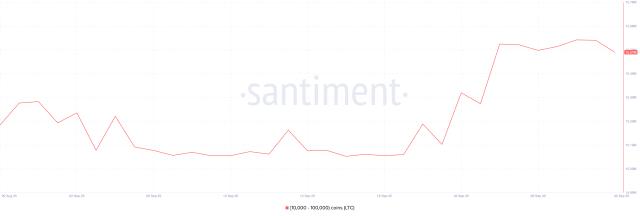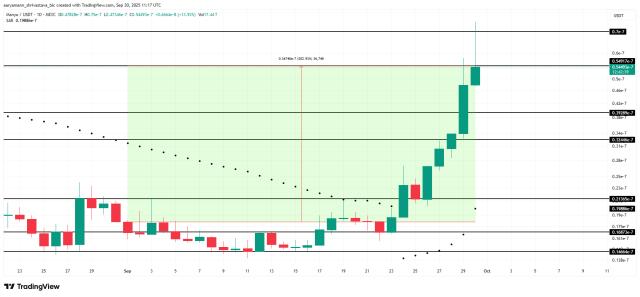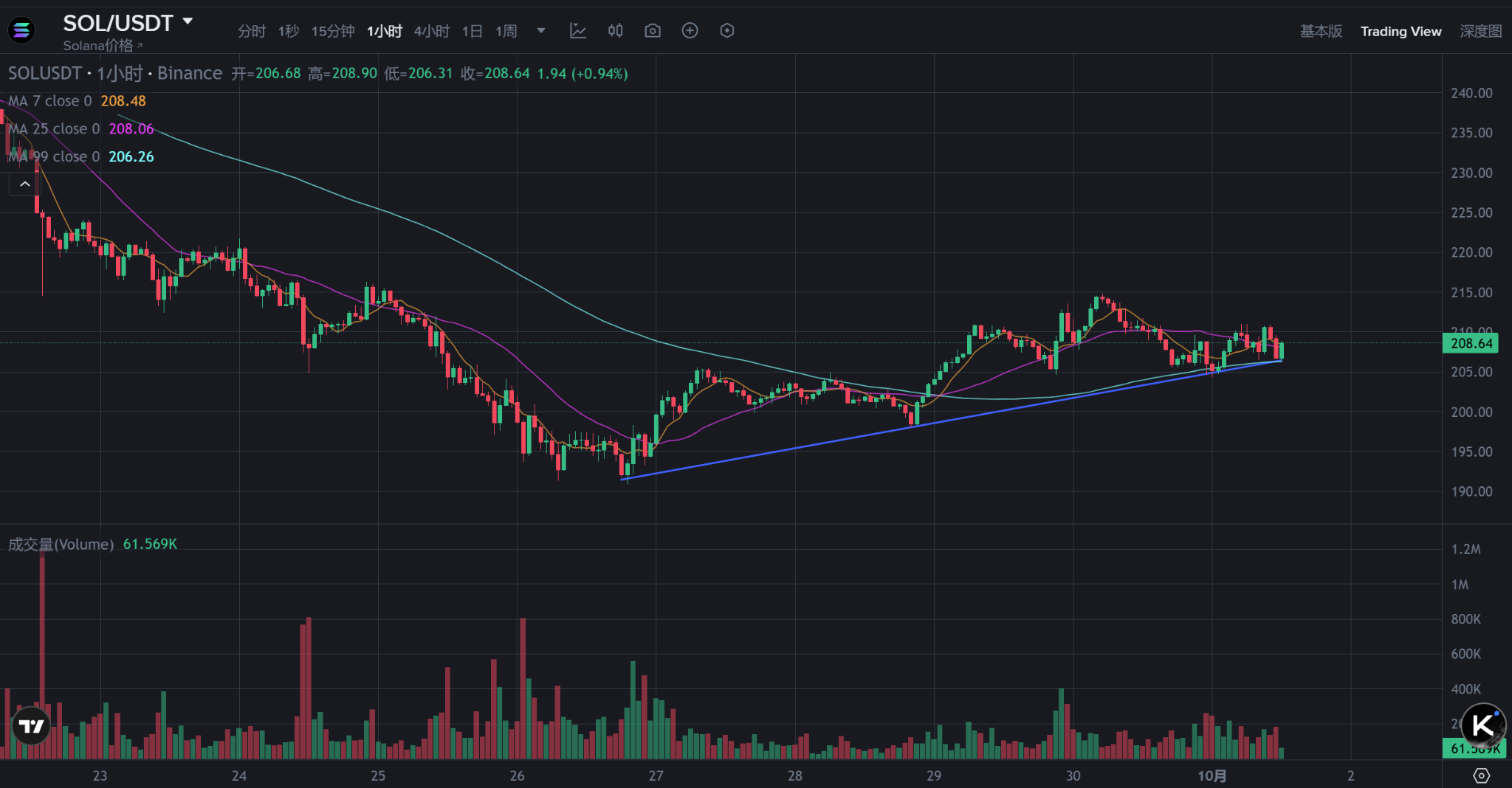
The black swan of the US government shutdown flapped its wings again. On October 1, the price of SOL suddenly crashed to $204. Later, leveraged retail bulls were washed out in the violent fluctuations.
However, this panic sell-off was surprisingly short-lived. At the moment the price hit bottom, on-chain data captured large entities quietly accumulating chips.
As of press time, Sol has rebounded quickly to above $209, successfully reclaiming its mid-range weekly opening price. Despite an initial sell-off sparked by political uncertainty, the Dow Jones Industrial Average, S&P 500, and Nasdaq all closed higher that day, with the cryptocurrency market closely following the stock market's lead. This resilience sends a clear signal to the market: institutional investors are not changing their long-term positions due to short-term political noise.
Institutional accumulation and on-chain signals
On-chain data provides clear evidence of continued accumulation of SOL by institutions.
On September 22, SOL saw a net outflow of $126.8 million, one of the largest single-day outflows in recent weeks.
Such large-scale outflows typically indicate that whales and large holders are moving assets from exchanges to private wallets, reducing the liquidity supply in the market in preparation for long-term holding.
Spot market traders have steadily accumulated over $100 million worth of Solana over the past five days. The largest single purchase occurred on March 28th, amounting to $89 million. This accumulation pattern aligns with growing institutional confidence in Solana's long-term prospects. Activity on the Solana network itself also supports this optimistic outlook.
From March 24th to mid-September, the number of transactions on the Solana network increased from 87.6 million to 92.7 million, demonstrating increased user activity. This strengthening fundamentals provides positive support for price action, indicating that network usage growth precedes price increases.

The surge in stablecoin supply provides a key signal. In the past 24 hours, the total amount of stablecoins on Solana has increased by more than $300 million.
Historical data shows that an increase in stablecoin supply often signals a rise in demand for SOL, as traders need to purchase SOL to participate in DeFi and memecoin activities in the Solana ecosystem.
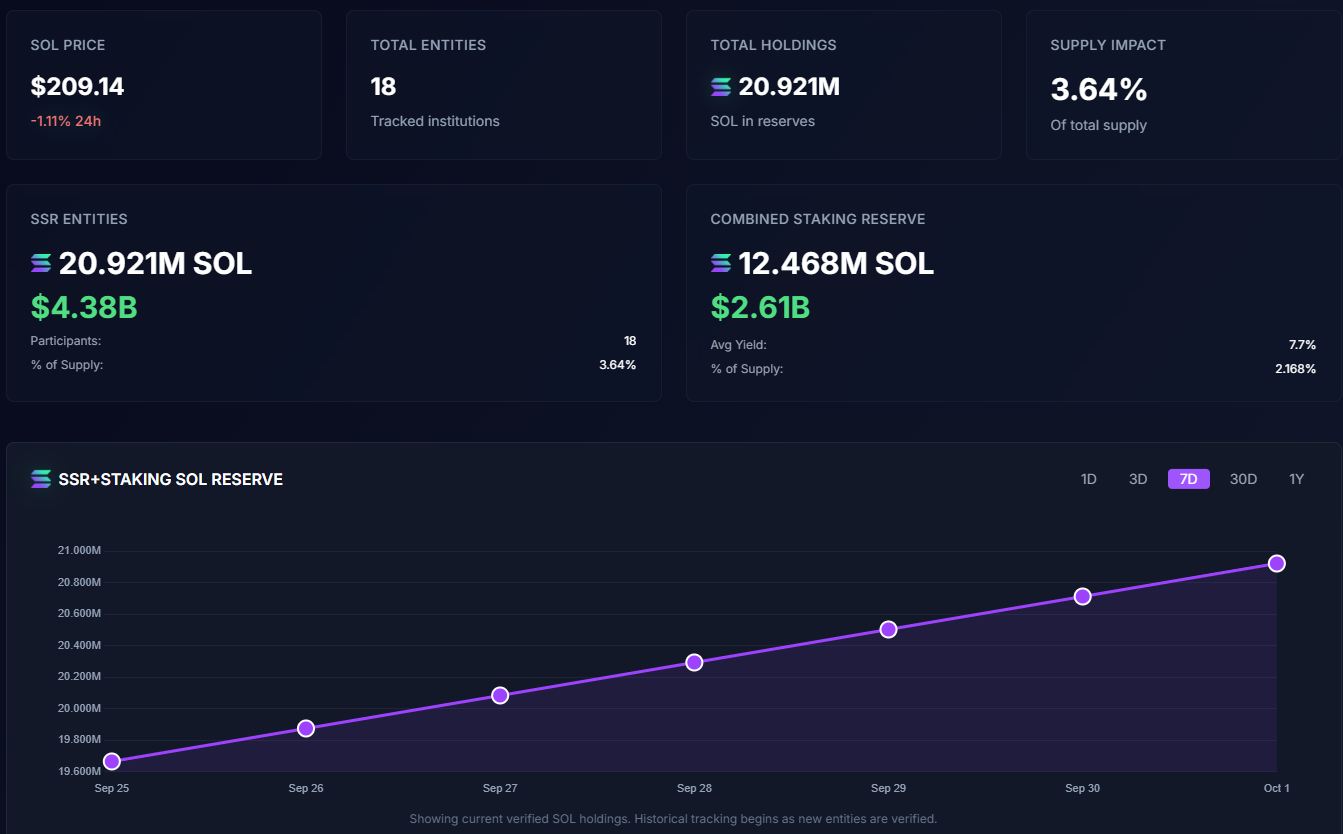
In addition, the Solana Treasury established by 18 entities holds a total of 20.921 million SOL, valued at $4.37 billion. Of this, approximately 12.468 million SOL is staked, representing 59.6% of the total holdings of these entities. This long-term locking of supply provides structural support for prices.
Market resilience amid political volatility
The risk of a U.S. government shutdown should have been a major negative factor for the cryptocurrency market.
According to analysts, the government shutdown could cost the US economy approximately $7 billion per week. Delayed federal employee paychecks will impact consumer spending, and market anxiety over policy uncertainty will exacerbate volatility. Yet, the market has proven remarkably resilient. This seemingly counterintuitive phenomenon can be explained by two key factors: the market's pre-emptive pricing of the shutdown and cryptocurrency traders' increased focus on sector-specific catalysts.
Amidst the political gridlock in the United States, Bitcoin and SOL traders are focusing on numerous positive catalysts in the cryptocurrency market. Bitcoin traders are also keeping an eye on the Federal Reserve's three upcoming interest rate cuts and the potential appointment of a pro-Trump Fed chair. These macroeconomic factors could create a more favorable environment for riskier assets.
For Sol, traders expect Bitcoin's upward momentum to boost all Altcoin and are keeping their eyes fixed on the October 10th deadline by the U.S. Securities and Exchange Commission, when the commission will decide the fate of numerous spot Sol ETFs. This selective focus reflects the growing maturity of the cryptocurrency market, as participants learn to distinguish short-term noise from long-term trends.
SOL ETF Approval Prospects and Regulatory Changes
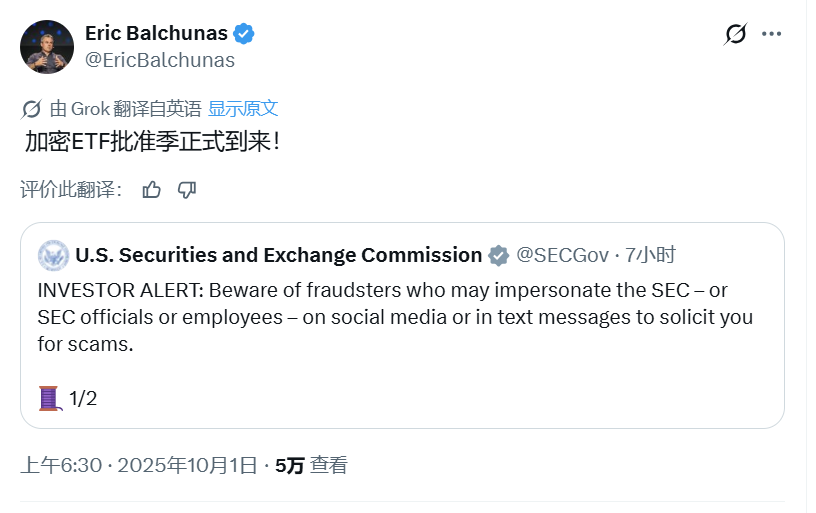
On October 1, Bloomberg senior ETF analyst Eric Balchunas made an important prediction. He believes that the probability of approval of ETFs for Litecoin, Solana and XRP has reached 100%.
This assessment is based on the SEC's recently approved universal listing standards, which render the existing 19b-4 application process obsolete and significantly streamline the approval process. Under the new regulations, approval time can be reduced from 240 days to 75 days. Analysts predict that over 100 cryptocurrency ETFs may be launched within the next 12 months.
The shift in the regulatory environment signals wider acceptance of cryptocurrencies as an asset class.
Issuers are preparing for the possibility of SEC approval of the Solana ETF soon, possibly as early as next week. Sources revealed that behind the scenes, issuers are preparing for the SEC to give the green light to the Solana ETF within days. Sources familiar with three different ETF issuers indicated that next week is a likely timeframe for Solana ETF approval . However, the US government shutdown could temporarily delay this process, as listing approval is highly unlikely during a shutdown. However, once the government reopens, approval of the Solana ETF could proceed swiftly. The significance of ETF approval goes far beyond short-term price impacts.
Galaxy Digital acquired $1.16 billion worth of Solana, the majority of which was transferred to Coinbase. This move reinforces market confidence in Solana's liquidity and institutional support. This institutional-grade blockchain recognition paves the way for Solana's adoption in traditional finance.
Technical Patterns and Price Target Forecasts
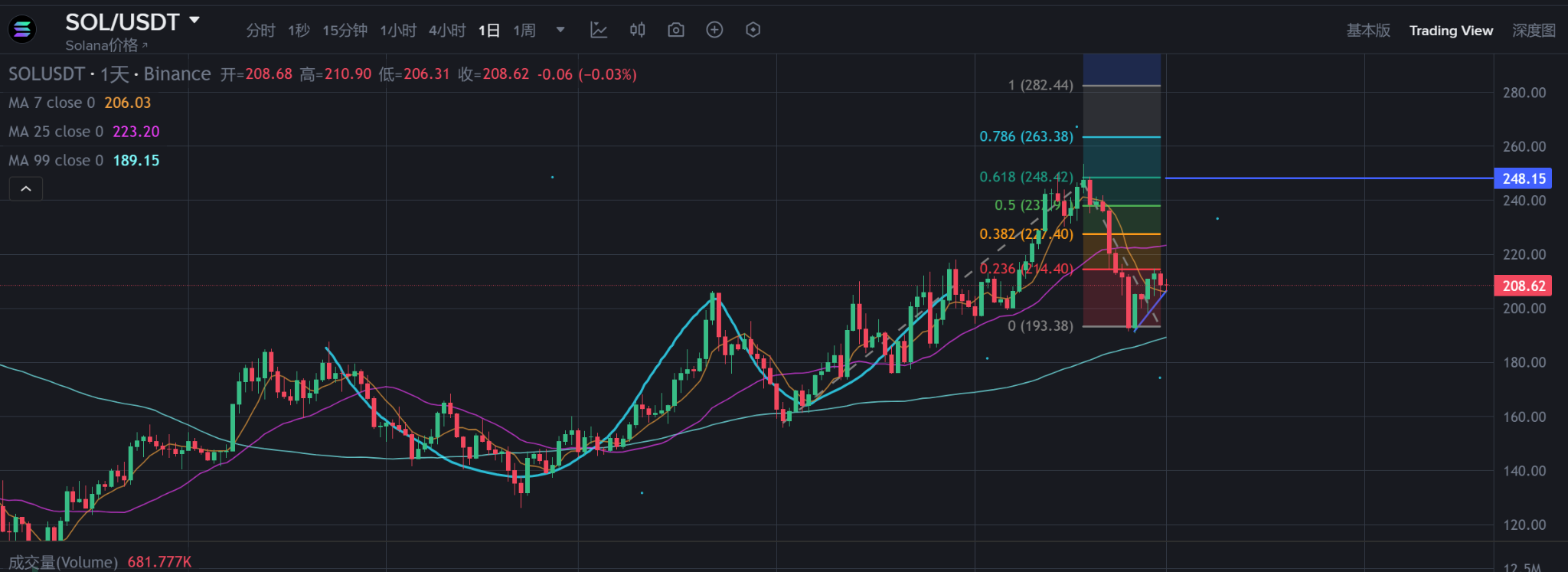
Technical analysis shows that Solana is at a critical turning point. Since May, Solana has been forming a classic "cup and handle" pattern, with the "cup" forming from May to July, with a low near $105, and the current price consolidation between $175 and $195 forming the "handle".
This bullish continuation pattern usually breaks out to the upside, with a measured target price of around $282.
A cup-with-handle breakout pattern confirmed on the monthly chart suggests a higher long-term target. Based on this pattern, Sol's long-term price target could reach around $550, representing a potential upside of over 120% over the next few quarters.
This technical narrative is reinforced by fundamental factors. Solana's proposed Alpenglow upgrade, expected to launch later this year, aims to increase network throughput and efficiency. Meanwhile, the Firedancer validator has undergone extensive testing and is expected to be a major catalyst for Solana's network performance.
In terms of key price levels, traders are viewing the $210-220 area as a significant support level, which coincides with the 20-day moving average cluster. On the upside, the $246-252 range constitutes a major resistance level, a breakout of which could open up the upside potential towards $265-320.
Ecosystem and fundamental support
The fundamental growth of the Solana ecosystem provides solid support for its valuation.
Solana will command a commanding 85 million of the 100 million tokens issued across major networks in 2025, reflecting its growing position as the leading platform for memecoins, gaming assets, and project tokens.

Solana's dominance in the DeFi space continues to expand. The total value locked (TVL) in its DeFi protocol has surpassed $12 billion, reaching a new all-time high . This growth highlights Solana's growing role as a decentralized lending, trading, and staking platform. Solana's network effect is creating a virtuous cycle. More users attract more developers, which in turn creates more applications, further attracting more users. Currently, Solana operates as a single global state machine, meaning that all nodes in the network have the same view of the blockchain state, making Solana highly resistant to fraud and censorship. Solana's speed, scalability, and low transaction costs make it an attractive choice for developers and users. Its Proof-of-History (PoH) consensus mechanism enables Solana to process up to 50,000 transactions per second with negligible fees. This technical advantage is particularly critical in application scenarios requiring high throughput.
In the long term, Solana's price trajectory will depend on its ability to achieve mass adoption. Technical analysis shows a cup-and-handle pattern pointing to a target of $550, supported by the ecosystem's fundamental growth. With the launch of the Firedancer validator and the implementation of the Alpenglow upgrade, Solana is expected to address network outages and further enhance its scalability.






